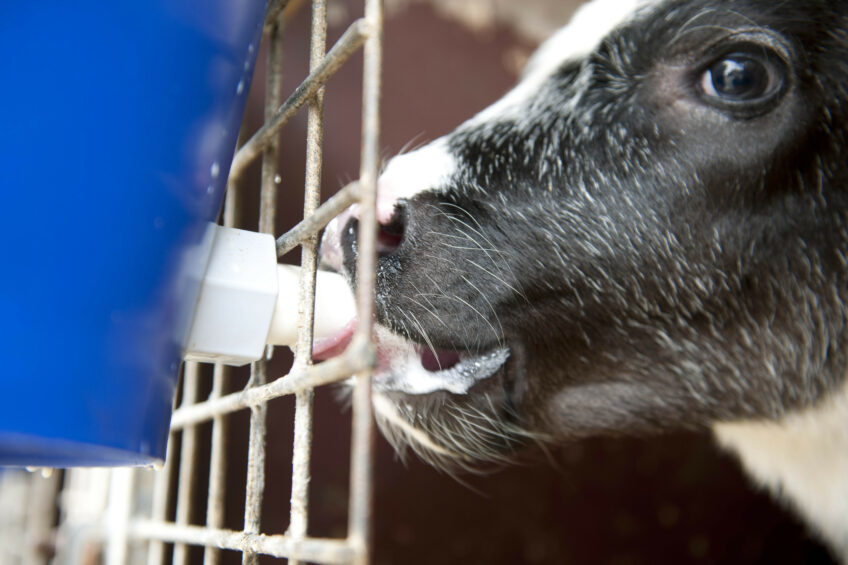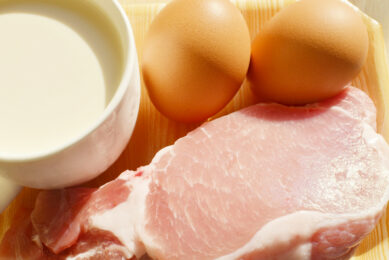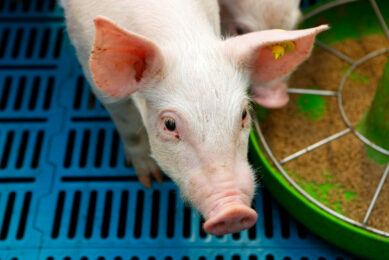Nutrition: The first line of defence

Antibiotics can be an important component of livestock management, yet care must be taken to safeguard the effectiveness of these tools. Effective nutritional solutions can be incorporated to reduce the reliance on on-farm antibiotics.
Researchers continue to investigate and fine-tune nutritional solutions for poultry and livestock farmers to positively influence animal health and well-being and decrease use of antibiotics on-farm. Refined Functional Carbohydrates (RFCs) are nutrition solutions that can help provide a healthy foundation for animals. RFCs are the components harvested from yeast cells (S. cerevisiae) using specific enzymes during the manufacturing process to ensure a high level of bioavailability and uniformity. This proprietary enzymatic hydrolysis yields Mannan oligosaccharides (MOS), Beta glucans (1,3-1,6) and D-Mannose.
These compounds are naturally present in all yeast cells, but are not readily bioavailable. The method of processing used to refine the yeast cells influences the size and structure of these liberated components, which in turn affect bioavailability and functionality. Research shows that each RFC has a specific mode of action and outcome when fed to several livestock species, including dairy, beef and poultry. RFCs also have been shown to positively influence the immune response of nursery pigs.

RFCs are a non-antibiotic feed additive that can help provide a healthy base for animal development. In essence, RFCs act as a prebiotic by feeding the beneficial bacteria found in the intestine while blocking sites for attachment by pathogens. Adding RFCs to an animal’s diet throughout their life cycle can help improve immune function by providing a defence mechanism against pathogenic bacteria. As a result, RFCs can help maintain gut health and overall animal health, boosting immune response. Since pathogenic challenges are difficult to predict, RFC feeding can act as a first line of defence when the challenges occur.
Reducing disease challenges
Research indicates that RFCs have been shown to reduce the incidence, severity and duration of cryptosporidiosis caused by Cryptosporidium parvum, a leading cause of scours in young calves – the bane of dairy producers, regardless of location (Figure 1). RFCs also have been shown to have activity against Eimeria, another scours-causing organism in other species.
Figure 1 – Effect of RFC on crypto infected calves.

RFCs bind to the receptors of the Cryptosporidium protozoa (and other pathogens) and prevent them from attaching to the intestinal wall and causing disease. The organisms then pass harmlessly through the digestive system. This assists in breaking the pathogen’s life cycle and helps to reduce the odds of reinfection. In addition, RFCs can bind – or agglutinate – to some bacterial pathogens and prevent colonisation of bovine colonic tissue by various types (serovars) of E. coli and Salmonella enterica. Furthermore, a study shows that feeder calves coming into a feedlot and fed RFCs required less antibiotic therapy treatment due to a marked decrease in bovine respiratory disease (BRD), an important health benefit to beef producers.
The ability of RFCs to positively influence animal health across species is remarkable. For example, a study conducted at North Carolina State University showed that the prevalence of caecal Salmonella in breeder hens fed the control diet (which did not contain any RFCs) was 71.4%. Meanwhile, prevalence of cecal Salmonella in breeder hens fed the RFC diet was 0%.
Further, when broiler progeny of these birds were fed the same diets as their parents (breeders), broilers on the RFC diet also contained no evidence of caecal Salmonella. However, 12.5% of broiler progeny caeca contained Salmonella when not fed a diet containing RFCs. Similar impressive results are found regarding RFCs impact on coccidiosis, which is caused by the protozoan-parasite Eimeria. In vitro studies show that RFCs reduced the attachment of Cryptosporidium parvum (same class of protozoa as Eimeria) to epithelial cells. Similarly, RFCs can lower the ability of Eimeria sporozoites to attach to intestinal epithelial cells. This means reduced intestinal lesions and more oocysts recycling to maintain immune development.
Negating the effects of mycotoxins
Likewise, RFCs help negate the negative effects of mycotoxins that sometimes occur in feed. Although mycotoxins generally do not have a direct effect on antibiotic usage, their presence in feed ingredients causes immune suppression that can lead to serious health challenges in animals that ultimately require antibiotic treatment. Measures to lower the impact of mycotoxins, therefore, also influence potential reductions in the use of antibiotics on-farm.
Recent global surveys show that 75% or more of ration ingredients may be contaminated by one or more mycotoxins. Mycotoxins are of concern because their presence can lead to lower feed intake, decreased nutrient utilisation, reduced gut health, immune suppression, poor growth, and performance and secondary infections like diarrhoea. Just as with pathogens, RFCs bind to mycotoxins – like aflatoxin – and prevent them from being absorbed through the gut and into the blood circulation. The toxins then pass harmlessly through the digestive system without negatively affecting animal performance.
Role of probiotics
Probiotics are another feed additive that can help in the battle against pathogens in livestock and poultry production. Probiotics are a live microbial feed additive that beneficially affects the host animal by improving its intestinal balance. In short, probiotics are the ‘good’ bacteria that live in the gastrointestinal tract. They work by competitive exclusion, meaning that when adequate populations of probiotic bacteria are present, they reduce the ability of pathogenic bacteria to get out of control and overwhelm the host. Put simply, they crowd pathogens out. They also work by specifically inhibiting pathogenic growth.
Livestock probiotics commonly feature various strains of Bacillus, Lactobacillus, Enterococcus and Saccharomyces yeast. There is still much to learn about their interactions with pathogens, but it is understood that certain strains of Bacillus have been proven to decrease growth of certain strains of pathogenic bacteria including E. coli, Clostridium, Streptococcus and Salmonella. Probiotics help prevent and control gastrointestinal pathogens and/or improve the performance and productivity of production animals through various mechanisms. Closely related strains may differ in their mode of action.
RFCs and probiotics offer producers of beef and dairy cattle, poultry, and swine the means and opportunity to successfully and positively influence animal immune function to better help animals deal with disease challenges. As a result, animals are healthier and more productive. In turn, this helps lower production costs. Ultimately, this heightened productivity aids in boosting farm profitability while preserving the effectiveness of valuable antibiotic tools for future generations.
References available upon request
Join 13,000+ subscribers
Subscribe to our newsletter to stay updated about all the need-to-know content in the dairy sector, two times a week.










